-
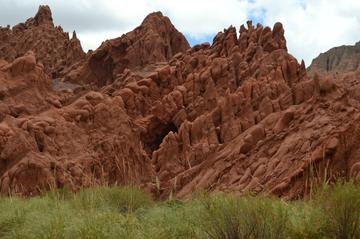 Acsibi Caves
Acsibi Caves Tucked in the Calchaquíes Valley lie a series of caves carved by Mother Nature from the red sandstone of the area. Accessible only on foot, the caves were formed thousands of years ago and are famous for their unusual formations and for the light that filters through gaps in its ceili
Acsibi Caves
Acsibi Caves Tucked in the Calchaquíes Valley lie a series of caves carved by Mother Nature from the red sandstone of the area. Accessible only on foot, the caves were formed thousands of years ago and are famous for their unusual formations and for the light that filters through gaps in its ceili
-
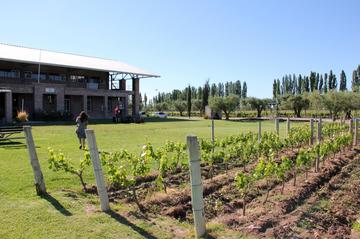 Achaval Ferrer Winery
Achaval Ferrer Winery This boutique winery traces its history back only to 1998, shortly after the beginning of the Malbec boom in Mendoza. The winery is Argentine and Italian owned, and the winemakers all have decades of experience extending back to far before this project began.The Achaval Ferre
Achaval Ferrer Winery
Achaval Ferrer Winery This boutique winery traces its history back only to 1998, shortly after the beginning of the Malbec boom in Mendoza. The winery is Argentine and Italian owned, and the winemakers all have decades of experience extending back to far before this project began.The Achaval Ferre
-
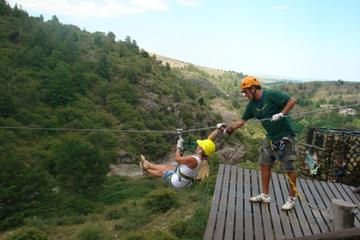 Penon del Aguila
Penon del Aguila This one-of-a-kind destination combines the best of theme parks, nature reserves and traditional mountain villages to create a 200-hectare adventure zone perfect for extreme adventurers and fun families. Travelers can explore the trails on a self-guided tour of the Penon del Aguil
Penon del Aguila
Penon del Aguila This one-of-a-kind destination combines the best of theme parks, nature reserves and traditional mountain villages to create a 200-hectare adventure zone perfect for extreme adventurers and fun families. Travelers can explore the trails on a self-guided tour of the Penon del Aguil
-
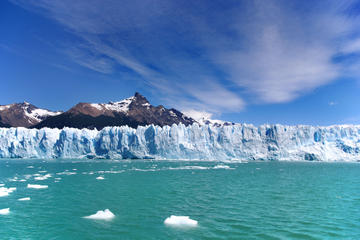 Siete Lagos
Siete Lagos The road of the seven lakes (Siete Lagos) is a spectacular 108 km (about 65-mile) drive in Argentina’s lake-dotted Patagonian lakes region. Route 234 runs from Villa La Angostura up to San Martín de Los Andes, not far from the undisputed capital and largest city of the region, Bariloch
Siete Lagos
Siete Lagos The road of the seven lakes (Siete Lagos) is a spectacular 108 km (about 65-mile) drive in Argentina’s lake-dotted Patagonian lakes region. Route 234 runs from Villa La Angostura up to San Martín de Los Andes, not far from the undisputed capital and largest city of the region, Bariloch
-
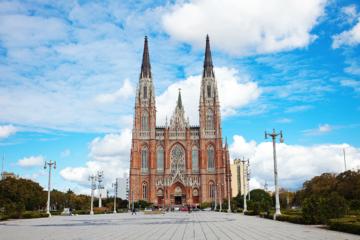 La Plata
La Plata In the 1880s shortly after Buenos Aires became the new capital of Argentina, the town of La Plata was founded as the capital of Buenos Aires Province. Argentine architect and urban planner Pedro Benoit planned the layout of the city — one of the first completely planned cities in South Am
La Plata
La Plata In the 1880s shortly after Buenos Aires became the new capital of Argentina, the town of La Plata was founded as the capital of Buenos Aires Province. Argentine architect and urban planner Pedro Benoit planned the layout of the city — one of the first completely planned cities in South Am
-
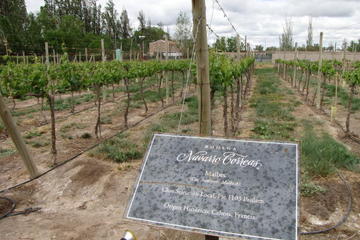 Navarro Correa Winery
Navarro Correa Winery The Navarro Correa Winery in Mendoza dates back to the year 1798, when the first grapes were planted at the foot of the Andes by Don Juan de Dios, who would later become an important political figure in the area.Nowadays, visitors come from all over the world for guided tours
Navarro Correa Winery
Navarro Correa Winery The Navarro Correa Winery in Mendoza dates back to the year 1798, when the first grapes were planted at the foot of the Andes by Don Juan de Dios, who would later become an important political figure in the area.Nowadays, visitors come from all over the world for guided tours
-
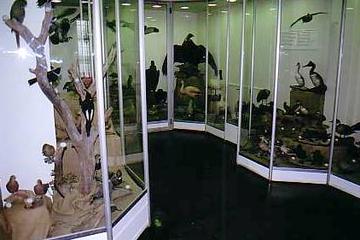 End of the World Museum (Museo del Fin del Mundo)
End of the World Museum (Museo del Fin del Mundo) Celebrate your visit to the world’s southernmost city by exploring the Museo del Fin del Mundo.The museum focuses on Ushuaia’s natural and indigenous history, including a menagerie of stuffed animals and the tools used to hunt them.The collection i
End of the World Museum (Museo del Fin del Mundo)
End of the World Museum (Museo del Fin del Mundo) Celebrate your visit to the world’s southernmost city by exploring the Museo del Fin del Mundo.The museum focuses on Ushuaia’s natural and indigenous history, including a menagerie of stuffed animals and the tools used to hunt them.The collection i
-
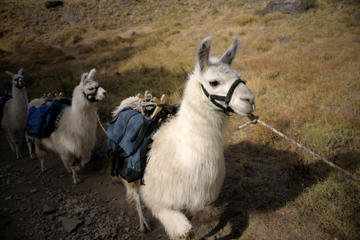 El Chalten
El Chalten A magnet for hikers and lovers of mountains, the village of El Chalten is flanked by the snowcapped peaks of the mighty Fitz Roy mountain range.Mountaineers come from around the world to climb the 3440m (1,1283-feet) Fitz Roy peak, while hikers follow mountain trails to backcountry camp
El Chalten
El Chalten A magnet for hikers and lovers of mountains, the village of El Chalten is flanked by the snowcapped peaks of the mighty Fitz Roy mountain range.Mountaineers come from around the world to climb the 3440m (1,1283-feet) Fitz Roy peak, while hikers follow mountain trails to backcountry camp
-
 Rafain Churrascaria
Rafain Churrascaria What do you do when you’re in rural Brazil? Feast on churrasco and enjoy a lively dance show, of course. In the city of Foz do Iguaçu near Iguazu Falls, the Rafain Churrascaria dinner show gives a flamboyant introduction into Central and South American music, dress and dance cu
Rafain Churrascaria
Rafain Churrascaria What do you do when you’re in rural Brazil? Feast on churrasco and enjoy a lively dance show, of course. In the city of Foz do Iguaçu near Iguazu Falls, the Rafain Churrascaria dinner show gives a flamboyant introduction into Central and South American music, dress and dance cu
-
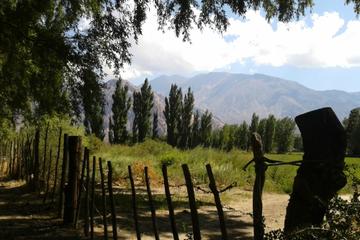 Uspallata
Uspallata This small town of less than 3,500 inhabitants mainly receives visitors who are on their way between Chile and Argentina, as it is either the first or the last population center between the countries, which are separated by the nearly 4,000-meter mountain pass at Los Libertadores. Uspall
Uspallata
Uspallata This small town of less than 3,500 inhabitants mainly receives visitors who are on their way between Chile and Argentina, as it is either the first or the last population center between the countries, which are separated by the nearly 4,000-meter mountain pass at Los Libertadores. Uspall
-
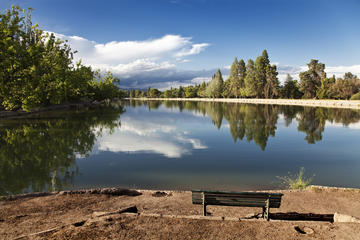 General San Martin Park
General San Martin Park Mendoza’s expansive General San Martin Park is a landscaped oasis in the formal European style in the city’s west.With ornamental fountains and classical statues, a lake and monuments, the park was created in the 1890s following English and French landscaping traditions.Gra
General San Martin Park
General San Martin Park Mendoza’s expansive General San Martin Park is a landscaped oasis in the formal European style in the city’s west.With ornamental fountains and classical statues, a lake and monuments, the park was created in the 1890s following English and French landscaping traditions.Gra
-
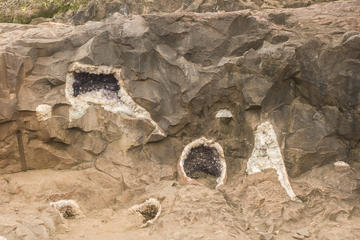 Wanda Mines
Wanda Mines The Wanda Mines, home to some of the best agate, amethyst, quartz and topaz found in Argentina, make for a fascinating visit in the north of Argentina. Located less than 40 miles (60 km) from Puerto Iguazu in the rain forest along the Paraná River, this open pit mine is a delight for t
Wanda Mines
Wanda Mines The Wanda Mines, home to some of the best agate, amethyst, quartz and topaz found in Argentina, make for a fascinating visit in the north of Argentina. Located less than 40 miles (60 km) from Puerto Iguazu in the rain forest along the Paraná River, this open pit mine is a delight for t
-
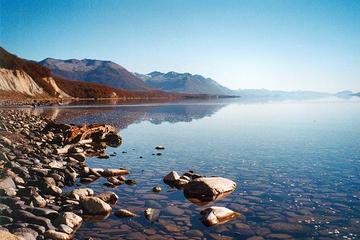 Fuegian Andes
Fuegian Andes The Fuegian Andes, which cross the entire Tierra Del Fuego Archipelago, are the southernmost chain of the Andes Mountains. Although quite small compared to other areas of South America’s mountain chain, its tallest peaks still look quite formidable because they rise straight out of t
Fuegian Andes
Fuegian Andes The Fuegian Andes, which cross the entire Tierra Del Fuego Archipelago, are the southernmost chain of the Andes Mountains. Although quite small compared to other areas of South America’s mountain chain, its tallest peaks still look quite formidable because they rise straight out of t
-
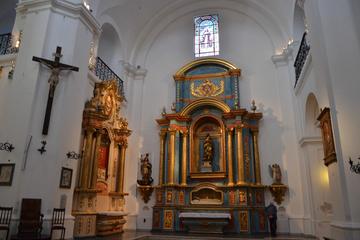 San Ignacio de Loyola Church
San Ignacio de Loyola Church San Ignacio de Loyola Church began as a small adobe church built by the Jesuits in 1675. The structure as it stands today, located in the Montserrat neighborhood, was built between 1710 and 1734, making it the oldest colonial church in Buenos Aires. San Ignacio de Loyo
San Ignacio de Loyola Church
San Ignacio de Loyola Church San Ignacio de Loyola Church began as a small adobe church built by the Jesuits in 1675. The structure as it stands today, located in the Montserrat neighborhood, was built between 1710 and 1734, making it the oldest colonial church in Buenos Aires. San Ignacio de Loyo
-
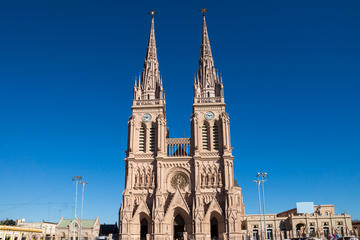 Lujan Basilica
Lujan Basilica Located just shy of 50 miles (75 kilometers) outside of Buenos Aires, the town of Lujan is famous for its Neogothic cathedral dedicated to Our Lady of Lujan, the patron saint of Argentina. The twin towers of the basilica stand 348 feet (106 meters) tall above the otherwise flat area
Lujan Basilica
Lujan Basilica Located just shy of 50 miles (75 kilometers) outside of Buenos Aires, the town of Lujan is famous for its Neogothic cathedral dedicated to Our Lady of Lujan, the patron saint of Argentina. The twin towers of the basilica stand 348 feet (106 meters) tall above the otherwise flat area
-
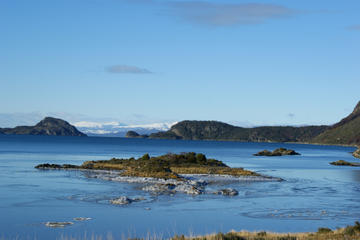 Lapataia Bay
Lapataia Bay Lapataia Bay is where Argentina’s RN 3 road ends, a road that is a continuation of the Pan-American Highway, which stretches all the way to Alaska. Roadies are always stopping to pose next to the sign here in Lapataia Bay, and it’s worth thinking about how far they’ve come to get ther
Lapataia Bay
Lapataia Bay Lapataia Bay is where Argentina’s RN 3 road ends, a road that is a continuation of the Pan-American Highway, which stretches all the way to Alaska. Roadies are always stopping to pose next to the sign here in Lapataia Bay, and it’s worth thinking about how far they’ve come to get ther
-
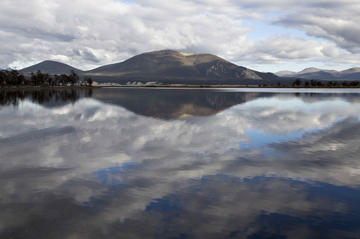 Lake Fagnano
Lake Fagnano Lake Fagnano sits directly above the Magallanes-Fagnano Fault, which marks the boundary between the Scotia and South American tectonic plates. The 98km long lake also sits upon the Chile/Argentina border; however, the majority of the lake belongs to Argentina. It’s also the largest la
Lake Fagnano
Lake Fagnano Lake Fagnano sits directly above the Magallanes-Fagnano Fault, which marks the boundary between the Scotia and South American tectonic plates. The 98km long lake also sits upon the Chile/Argentina border; however, the majority of the lake belongs to Argentina. It’s also the largest la
-
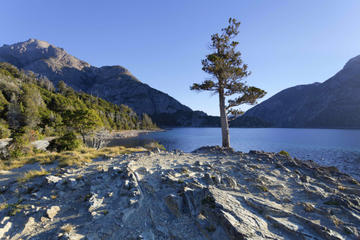 Lake Escondido
Lake Escondido Lago Escondido, which translates to Hidden Lake, is surrounded by the Fuegian Andes just north of Ushuaia, Argentina. Many tourists choose to visit on a day-trip from Ushuaia; however, Hosteria Petral provides a lakeside basecamp for anybody interested in taking advantage of its sta
Lake Escondido
Lake Escondido Lago Escondido, which translates to Hidden Lake, is surrounded by the Fuegian Andes just north of Ushuaia, Argentina. Many tourists choose to visit on a day-trip from Ushuaia; however, Hosteria Petral provides a lakeside basecamp for anybody interested in taking advantage of its sta
-
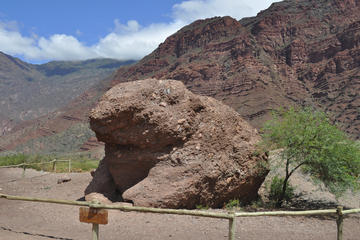 Quebrada de las Conchas
Quebrada de las Conchas The first 30 miles (50 km) of the road from Cafayate to Salta in northwestern Argentina has become a tourist destination in its own right, in large part due to the spectacular scenery of Quebrada de Las Conchas (Canyon of the Shells). The site comprises a series of red rock
Quebrada de las Conchas
Quebrada de las Conchas The first 30 miles (50 km) of the road from Cafayate to Salta in northwestern Argentina has become a tourist destination in its own right, in large part due to the spectacular scenery of Quebrada de Las Conchas (Canyon of the Shells). The site comprises a series of red rock
-
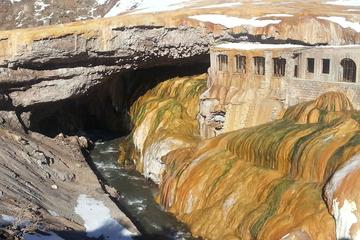 Puente del Inca
Puente del Inca The area surrounding Mendoza, Argentina is of great historical importance, having been used as an important pass connecting the east and west parts of the South American continent. There is a natural bridge called Puente del Inca, not far from Mendoza (towards the Andes) over the R
Puente del Inca
Puente del Inca The area surrounding Mendoza, Argentina is of great historical importance, having been used as an important pass connecting the east and west parts of the South American continent. There is a natural bridge called Puente del Inca, not far from Mendoza (towards the Andes) over the R
Total
823 -travel
FirstPage PreviousPage NextPage LastPage CurrentPage:
7/42 20-travel/Page GoTo Page:
 Acsibi Caves
Acsibi Caves Tucked in the Calchaquíes Valley lie a series of caves carved by Mother Nature from the red sandstone of the area. Accessible only on foot, the caves were formed thousands of years ago and are famous for their unusual formations and for the light that filters through gaps in its ceili
Acsibi Caves
Acsibi Caves Tucked in the Calchaquíes Valley lie a series of caves carved by Mother Nature from the red sandstone of the area. Accessible only on foot, the caves were formed thousands of years ago and are famous for their unusual formations and for the light that filters through gaps in its ceili
 Achaval Ferrer Winery
Achaval Ferrer Winery This boutique winery traces its history back only to 1998, shortly after the beginning of the Malbec boom in Mendoza. The winery is Argentine and Italian owned, and the winemakers all have decades of experience extending back to far before this project began.The Achaval Ferre
Achaval Ferrer Winery
Achaval Ferrer Winery This boutique winery traces its history back only to 1998, shortly after the beginning of the Malbec boom in Mendoza. The winery is Argentine and Italian owned, and the winemakers all have decades of experience extending back to far before this project began.The Achaval Ferre
 Penon del Aguila
Penon del Aguila This one-of-a-kind destination combines the best of theme parks, nature reserves and traditional mountain villages to create a 200-hectare adventure zone perfect for extreme adventurers and fun families. Travelers can explore the trails on a self-guided tour of the Penon del Aguil
Penon del Aguila
Penon del Aguila This one-of-a-kind destination combines the best of theme parks, nature reserves and traditional mountain villages to create a 200-hectare adventure zone perfect for extreme adventurers and fun families. Travelers can explore the trails on a self-guided tour of the Penon del Aguil
 Siete Lagos
Siete Lagos The road of the seven lakes (Siete Lagos) is a spectacular 108 km (about 65-mile) drive in Argentina’s lake-dotted Patagonian lakes region. Route 234 runs from Villa La Angostura up to San Martín de Los Andes, not far from the undisputed capital and largest city of the region, Bariloch
Siete Lagos
Siete Lagos The road of the seven lakes (Siete Lagos) is a spectacular 108 km (about 65-mile) drive in Argentina’s lake-dotted Patagonian lakes region. Route 234 runs from Villa La Angostura up to San Martín de Los Andes, not far from the undisputed capital and largest city of the region, Bariloch
 La Plata
La Plata In the 1880s shortly after Buenos Aires became the new capital of Argentina, the town of La Plata was founded as the capital of Buenos Aires Province. Argentine architect and urban planner Pedro Benoit planned the layout of the city — one of the first completely planned cities in South Am
La Plata
La Plata In the 1880s shortly after Buenos Aires became the new capital of Argentina, the town of La Plata was founded as the capital of Buenos Aires Province. Argentine architect and urban planner Pedro Benoit planned the layout of the city — one of the first completely planned cities in South Am
 Navarro Correa Winery
Navarro Correa Winery The Navarro Correa Winery in Mendoza dates back to the year 1798, when the first grapes were planted at the foot of the Andes by Don Juan de Dios, who would later become an important political figure in the area.Nowadays, visitors come from all over the world for guided tours
Navarro Correa Winery
Navarro Correa Winery The Navarro Correa Winery in Mendoza dates back to the year 1798, when the first grapes were planted at the foot of the Andes by Don Juan de Dios, who would later become an important political figure in the area.Nowadays, visitors come from all over the world for guided tours
 End of the World Museum (Museo del Fin del Mundo)
End of the World Museum (Museo del Fin del Mundo) Celebrate your visit to the world’s southernmost city by exploring the Museo del Fin del Mundo.The museum focuses on Ushuaia’s natural and indigenous history, including a menagerie of stuffed animals and the tools used to hunt them.The collection i
End of the World Museum (Museo del Fin del Mundo)
End of the World Museum (Museo del Fin del Mundo) Celebrate your visit to the world’s southernmost city by exploring the Museo del Fin del Mundo.The museum focuses on Ushuaia’s natural and indigenous history, including a menagerie of stuffed animals and the tools used to hunt them.The collection i
 El Chalten
El Chalten A magnet for hikers and lovers of mountains, the village of El Chalten is flanked by the snowcapped peaks of the mighty Fitz Roy mountain range.Mountaineers come from around the world to climb the 3440m (1,1283-feet) Fitz Roy peak, while hikers follow mountain trails to backcountry camp
El Chalten
El Chalten A magnet for hikers and lovers of mountains, the village of El Chalten is flanked by the snowcapped peaks of the mighty Fitz Roy mountain range.Mountaineers come from around the world to climb the 3440m (1,1283-feet) Fitz Roy peak, while hikers follow mountain trails to backcountry camp
 Rafain Churrascaria
Rafain Churrascaria What do you do when you’re in rural Brazil? Feast on churrasco and enjoy a lively dance show, of course. In the city of Foz do Iguaçu near Iguazu Falls, the Rafain Churrascaria dinner show gives a flamboyant introduction into Central and South American music, dress and dance cu
Rafain Churrascaria
Rafain Churrascaria What do you do when you’re in rural Brazil? Feast on churrasco and enjoy a lively dance show, of course. In the city of Foz do Iguaçu near Iguazu Falls, the Rafain Churrascaria dinner show gives a flamboyant introduction into Central and South American music, dress and dance cu
 Uspallata
Uspallata This small town of less than 3,500 inhabitants mainly receives visitors who are on their way between Chile and Argentina, as it is either the first or the last population center between the countries, which are separated by the nearly 4,000-meter mountain pass at Los Libertadores. Uspall
Uspallata
Uspallata This small town of less than 3,500 inhabitants mainly receives visitors who are on their way between Chile and Argentina, as it is either the first or the last population center between the countries, which are separated by the nearly 4,000-meter mountain pass at Los Libertadores. Uspall
 General San Martin Park
General San Martin Park Mendoza’s expansive General San Martin Park is a landscaped oasis in the formal European style in the city’s west.With ornamental fountains and classical statues, a lake and monuments, the park was created in the 1890s following English and French landscaping traditions.Gra
General San Martin Park
General San Martin Park Mendoza’s expansive General San Martin Park is a landscaped oasis in the formal European style in the city’s west.With ornamental fountains and classical statues, a lake and monuments, the park was created in the 1890s following English and French landscaping traditions.Gra
 Wanda Mines
Wanda Mines The Wanda Mines, home to some of the best agate, amethyst, quartz and topaz found in Argentina, make for a fascinating visit in the north of Argentina. Located less than 40 miles (60 km) from Puerto Iguazu in the rain forest along the Paraná River, this open pit mine is a delight for t
Wanda Mines
Wanda Mines The Wanda Mines, home to some of the best agate, amethyst, quartz and topaz found in Argentina, make for a fascinating visit in the north of Argentina. Located less than 40 miles (60 km) from Puerto Iguazu in the rain forest along the Paraná River, this open pit mine is a delight for t
 Fuegian Andes
Fuegian Andes The Fuegian Andes, which cross the entire Tierra Del Fuego Archipelago, are the southernmost chain of the Andes Mountains. Although quite small compared to other areas of South America’s mountain chain, its tallest peaks still look quite formidable because they rise straight out of t
Fuegian Andes
Fuegian Andes The Fuegian Andes, which cross the entire Tierra Del Fuego Archipelago, are the southernmost chain of the Andes Mountains. Although quite small compared to other areas of South America’s mountain chain, its tallest peaks still look quite formidable because they rise straight out of t
 San Ignacio de Loyola Church
San Ignacio de Loyola Church San Ignacio de Loyola Church began as a small adobe church built by the Jesuits in 1675. The structure as it stands today, located in the Montserrat neighborhood, was built between 1710 and 1734, making it the oldest colonial church in Buenos Aires. San Ignacio de Loyo
San Ignacio de Loyola Church
San Ignacio de Loyola Church San Ignacio de Loyola Church began as a small adobe church built by the Jesuits in 1675. The structure as it stands today, located in the Montserrat neighborhood, was built between 1710 and 1734, making it the oldest colonial church in Buenos Aires. San Ignacio de Loyo
 Lujan Basilica
Lujan Basilica Located just shy of 50 miles (75 kilometers) outside of Buenos Aires, the town of Lujan is famous for its Neogothic cathedral dedicated to Our Lady of Lujan, the patron saint of Argentina. The twin towers of the basilica stand 348 feet (106 meters) tall above the otherwise flat area
Lujan Basilica
Lujan Basilica Located just shy of 50 miles (75 kilometers) outside of Buenos Aires, the town of Lujan is famous for its Neogothic cathedral dedicated to Our Lady of Lujan, the patron saint of Argentina. The twin towers of the basilica stand 348 feet (106 meters) tall above the otherwise flat area
 Lapataia Bay
Lapataia Bay Lapataia Bay is where Argentina’s RN 3 road ends, a road that is a continuation of the Pan-American Highway, which stretches all the way to Alaska. Roadies are always stopping to pose next to the sign here in Lapataia Bay, and it’s worth thinking about how far they’ve come to get ther
Lapataia Bay
Lapataia Bay Lapataia Bay is where Argentina’s RN 3 road ends, a road that is a continuation of the Pan-American Highway, which stretches all the way to Alaska. Roadies are always stopping to pose next to the sign here in Lapataia Bay, and it’s worth thinking about how far they’ve come to get ther
 Lake Fagnano
Lake Fagnano Lake Fagnano sits directly above the Magallanes-Fagnano Fault, which marks the boundary between the Scotia and South American tectonic plates. The 98km long lake also sits upon the Chile/Argentina border; however, the majority of the lake belongs to Argentina. It’s also the largest la
Lake Fagnano
Lake Fagnano Lake Fagnano sits directly above the Magallanes-Fagnano Fault, which marks the boundary between the Scotia and South American tectonic plates. The 98km long lake also sits upon the Chile/Argentina border; however, the majority of the lake belongs to Argentina. It’s also the largest la
 Lake Escondido
Lake Escondido Lago Escondido, which translates to Hidden Lake, is surrounded by the Fuegian Andes just north of Ushuaia, Argentina. Many tourists choose to visit on a day-trip from Ushuaia; however, Hosteria Petral provides a lakeside basecamp for anybody interested in taking advantage of its sta
Lake Escondido
Lake Escondido Lago Escondido, which translates to Hidden Lake, is surrounded by the Fuegian Andes just north of Ushuaia, Argentina. Many tourists choose to visit on a day-trip from Ushuaia; however, Hosteria Petral provides a lakeside basecamp for anybody interested in taking advantage of its sta
 Quebrada de las Conchas
Quebrada de las Conchas The first 30 miles (50 km) of the road from Cafayate to Salta in northwestern Argentina has become a tourist destination in its own right, in large part due to the spectacular scenery of Quebrada de Las Conchas (Canyon of the Shells). The site comprises a series of red rock
Quebrada de las Conchas
Quebrada de las Conchas The first 30 miles (50 km) of the road from Cafayate to Salta in northwestern Argentina has become a tourist destination in its own right, in large part due to the spectacular scenery of Quebrada de Las Conchas (Canyon of the Shells). The site comprises a series of red rock
 Puente del Inca
Puente del Inca The area surrounding Mendoza, Argentina is of great historical importance, having been used as an important pass connecting the east and west parts of the South American continent. There is a natural bridge called Puente del Inca, not far from Mendoza (towards the Andes) over the R
Puente del Inca
Puente del Inca The area surrounding Mendoza, Argentina is of great historical importance, having been used as an important pass connecting the east and west parts of the South American continent. There is a natural bridge called Puente del Inca, not far from Mendoza (towards the Andes) over the R